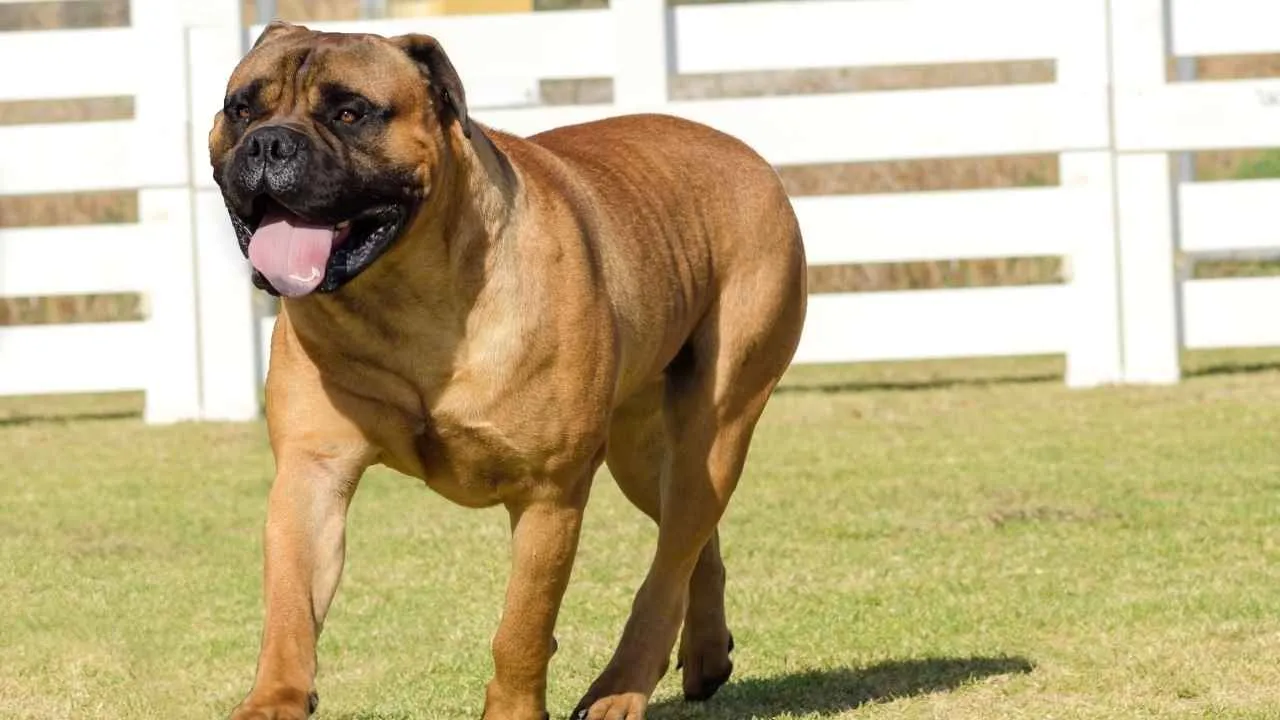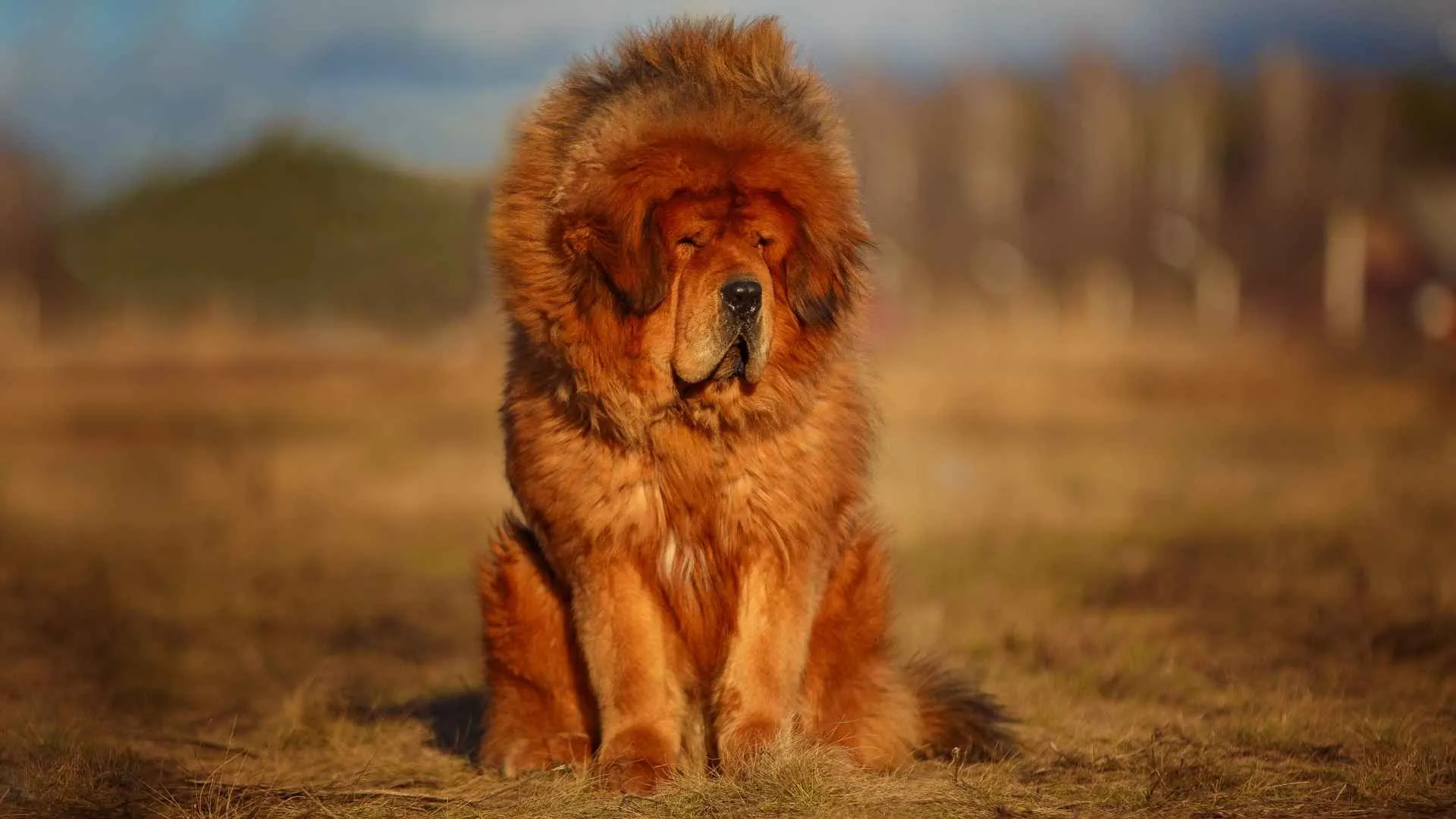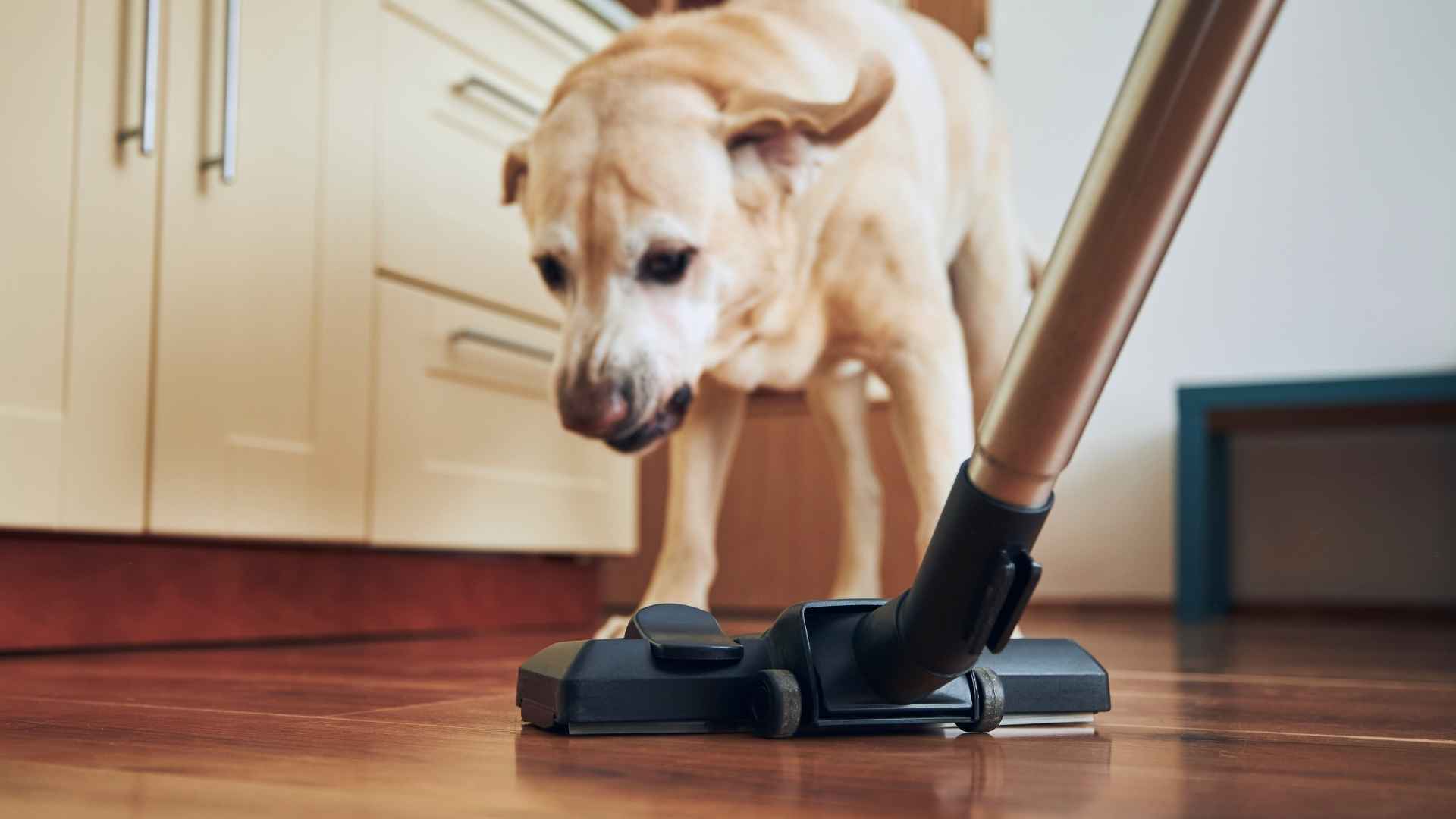To some dogs, your vacuum is the enemy, and they’re ready to defend you with everything they’ve got. No training, no distraction, no treat is enough to stop the barking once that machine starts growling. It’s not bad behavior. It’s instinct.
Certain breeds are hardwired to react. They pick up on sound, movement, and tension. And when the vacuum enters the scene, they react like it’s their duty. These dogs aren’t trying to misbehave. They believe they’re helping. Their instincts tell them to guard, chase, or control what feels unpredictable.
So if vacuuming your house feels more like preparing for war, you’re probably living with one of the breeds we’re about to talk about. Below are the dogs that bark at vacuums like enemies, with all the noise and drama to match.
Dog Breeds That Bark At Vacuums Like Enemies
1. Bullmastiff

Bullmastiffs are known for their calm presence, but when startled by sudden noise, their protective instincts turn on fast. The unpredictable hum of a vacuum cleaner can trigger their alert mode, as if it were a threat that snuck past their guard. Their reactions may include loud, deep barks and firm stances.
Protective Drive Comes First
This breed was historically used to guard estates, and that legacy shows in their modern behavior, as Zealandia Pets claims. They often perceive unfamiliar sounds as intrusions, especially in indoor environments. A loud machine moving across their space activates a response meant to defend their territory.
Discomfort with Mechanical Movement
Bullmastiffs don’t easily adjust to unnatural sounds, especially when combined with motion. The sharp shifts, rolling noise, and suction sound patterns of a vacuum cleaner can feel suspicious. Many dogs might simply watch, but Bullmastiffs often feel compelled to step in and vocalize.
Low Patience for Disruption
They prefer quiet, steady surroundings and are quick to react when that balance shifts. This can surprise dog owners who assume their calm dog will ignore household cleaning. Instead, the noise can become a recurring trigger that sparks strong, booming objections.
2. Doberman Pinscher

Dobermans are known for their sharp senses, and sudden mechanical sounds instantly catch their attention. The rumble of a cleaner often feels out of place in their territory. This can trigger barking or pacing as they try to assess whether it’s a threat.
Protective by Design
As one of the most focused working breeds, their instinct is to protect their home and family. A vacuum’s unpredictable movement and unfamiliar sound challenge their sense of control. That’s why many Dobermans react with alert barking and high-body awareness.
Noise and Movement Triggers
They’re naturally responsive to changes in their environment and may see a moving vacuum as something to confront. Without consistent exposure, the noise alone can feel agitating. A fenced yard helps burn energy, but indoor sounds still demand their response.
Training Shapes Their Response
If a Doberman hasn’t been trained to associate household noises with neutral outcomes, it may act out when things shift. Early introduction to basic commands helps redirect this reaction into more desired behavior, as per the AKC. Without this structure, their intensity can come out in loud ways.
3. German Shepherd

German Shepherds are highly alert and quick to respond to unfamiliar noises indoors. The loud hum of a vacuum starting inside a room can switch them into a guarding mode. Their deep barks often begin the moment the machine comes to life.
Trigger from Pattern and Motion
They recognize sound patterns and tend to focus on anything inconsistent. The unpredictable movement and whirring rhythm of a vacuum cleaner disrupts their sense of order. As the machine rolls from room to room, the reaction often intensifies.
Control-Oriented and Protective
German Shepherds are known to track movement with purpose, especially inside spaces they consider part of their watch. A device moving without a leash or human direction creates confusion. They respond with noise and posture designed to regain control.
Room Awareness and Sensory Overload
Even when placed in another room, their acute hearing and territorial memory drive them to respond. Barking from behind closed doors is common when the source remains out of view. Their behavior stems from guarding instincts, not nervousness toward the pet itself
4. Rottweiler

Rottweilers are natural guardians with a sharp sense of environmental shifts. The loud whirl of a vacuum can set off their alert system instantly. Even a sudden change in pitch or movement is enough to make them stand stiff and release a booming bark.
Possessive of Their Space
This breed is highly aware of its surroundings, especially in enclosed areas like hallways or living rooms. When a machine moves into their territory, they interpret it as a disruption. Rottweilers are known to circle the vacuum, tracking its path as if preparing for control.

Movement Triggers Deep Reactions
The way vacuums roll across the ground—fast, mechanical, and without clear intention—can overwhelm their senses. What may seem normal to most is unpredictable to them. This reaction doesn’t just happen once, but can repeat each time they hear it power up.
Energy Management Matters
Rottweilers require structured exercise to stay calm and confident around unfamiliar stimuli, as stated in the AKC. Without it, their reactions become more intense and less manageable. For dog owners with limited routines, vacuum-related barking becomes more frequent and harder to redirect.
5. Belgian Malinois

Belgian Malinois are quick to detect even subtle movement or noise in their surroundings. When a vacuum appears, the sudden sound, direction shifts, and mechanical noise register as threats. Their immediate reaction is to bark sharply, often pacing and tracking the machine closely.
Strong Herding and Guarding Response
This breed carries deeply rooted instincts from its herding and protection background. They react strongly to irregular movement patterns, like the back-and-forth motion of a vacuum. It feels like an unpredictable invader in their controlled space, prompting an intense vocal response.
Sensitive to High-Frequency Sounds
Belgian Malinois can detect sound frequencies that many other breeds ignore. The high-pitched whine of motors, especially from older vacuums, can irritate their acute hearing. Their barking often comes from discomfort as much as territorial alertness.
Low Tolerance for Repetitive Disruption
Routine cleaning becomes stimulation overload for this high-energy breed. Without an outlet for their alertness, barking at the vacuum becomes an expected reaction. It gives them something to control, even if the target is an ordinary household appliance.
6. Tibetan Mastiff

Tibetan Mastiffs are deeply territorial and possess a heightened sensitivity to their environment. The unpredictable sound and movement of a vacuum disrupts that stability. This often prompts intense barking, with postures that signal they’ve detected a possible intruder.
Sound Sensitivity Built by Purpose
This breed was developed to guard remote, often silent monasteries and mountain homes. Sudden or mechanical sounds clash with their ingrained sense of calm alertness. They react quickly and vocally when something unfamiliar invades their space, especially indoors.
Protective Instincts in Overdrive
A running vacuum might be mistaken for a moving threat within their territory. Their natural reaction is to stand between the source and their humans, vocalizing in bursts. Their warning barks can be loud, sharp, and often hard to calm once activated.
Low Tolerance for Uncontrolled Motion
Tibetan Mastiffs tend to distrust fast, erratic movement within their domain. The random back-and-forth of a vacuum on tiles or carpet can heighten that mistrust. Their reaction feels less like fear and more like suspicion, with vocal insistence.
7. Akita

Akitas are known for their strong protective instincts and low tolerance for unfamiliar disruptions. The unpredictable whirr and vibration of a vacuum often triggers their suspicion. This can lead to low growls that escalate into barking once the machine gets too close.
Territorial Response Patterns
This breed forms a deep attachment to its space and becomes vocal when something seems to invade it. Their reaction isn’t just to the sound, but to the vacuum’s movement across “their” floors. Akitas often follow it, watching closely and vocalizing when tension builds.
Minimal Exposure, High Reaction
Many Akitas are not exposed to vacuum cleaners often as puppies, making them less desensitized to mechanical noise. Their cautious temperament amplifies their reaction to anything that seems erratic or overly loud. These encounters can turn routine chores into vocal stand-offs.
Reserved but Vocal When Alerted
Though often quiet around familiar people, Akitas do not hesitate to bark when something feels off. The sudden activity of cleaning equipment inside their comfort zone can provoke fast, sharp vocal reactions. It’s an alert-style bark rooted in instinct, not fear.
Conclusion
There’s no question that some dogs were built to bark. And when the vacuum rolls out, their instincts roll with it. Every growl of the machine feels like a threat. For these dogs, a big bark isn’t noise—it’s action. It’s their point of defense. And they don’t hold back.
If you’re dealing with this daily, know you’re not alone. For some pups, it’s never just a chore. It’s a battle. But with the right tools, you can lower the volume and even reduce stress. A little extra walk, some indoor play, and patience go a long way.
Even the best-behaved animals need help understanding the sounds we take for granted. And if yours is a little louder than most, that’s okay. On the other side of that bark is love, loyalty, and protection.


